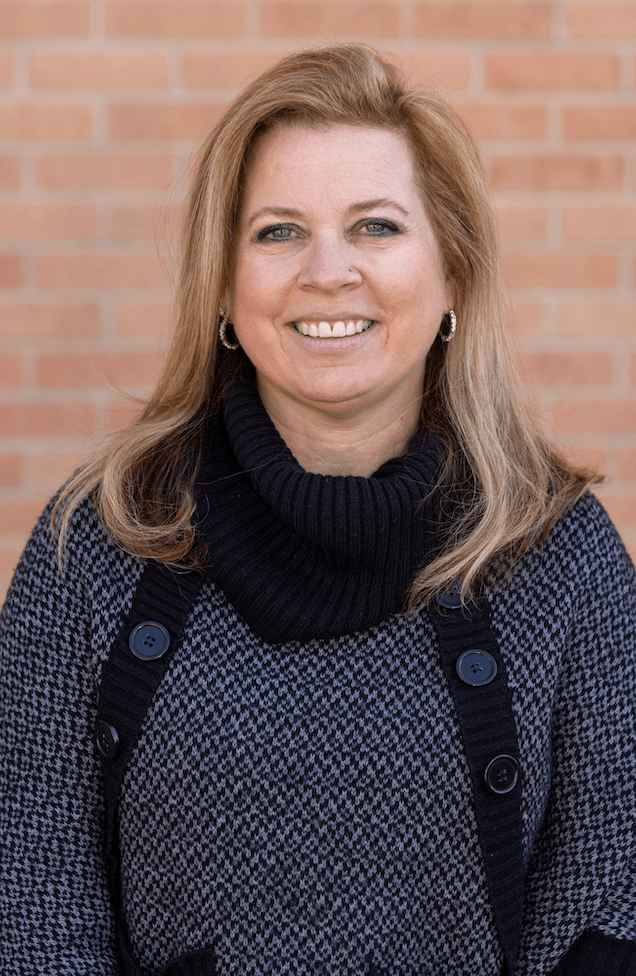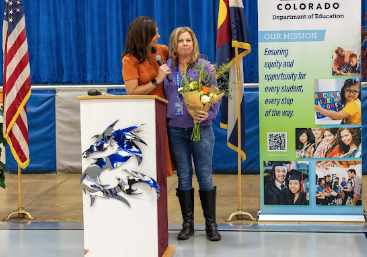
For years, Lucile Erwin Middle School Principal Dr. Olivia Gillespie sought the right career for herself. She worked in the financial world, real estate, and healthcare, and pursued a career in law. But no matter how successful she was or how much she enjoyed her job, she never really felt satisfied.
She had always felt drawn to education, but having faced many challenges and struggles in her own school years, she was hesitant to make teaching her career.
“I was the misguided kid in school,” she recalls. “I made some poor decisions. I had a teacher and coach, God rest her soul, and we would walk around the track together at school, and she said, ‘You should be a teacher.’”
But Olivia still wasn’t convinced that was the right path for her.
“It took me having my daughter to make me serious about going back to school at 31,” Dr. Olivia Gillespie says, explaining how she got an English degree still thinking she might want to be a lawyer.
She then spent time serving on different boards and youth organizations which, combined with what she felt was divine intervention, led her to a career advocating for youth. Now that Olivia’s three daughters are grown and she is enjoying being a grandma to her two young granddaughters, Olivia believes more than ever that she has found the career she was always meant to have.
“When you stop fighting it, you find where you’re supposed to be. The first time I stepped into a classroom, I knew. It just felt like home,” Olivia says. “It felt like I wasted all those years trying to run from it when I could have embraced it.”
Dr. Olivia Gillespie Rises Through The Ranks of Education

After that, Olivia spent years working her way up through several positions in the education field, from a classroom teacher in Aurora Public Schools to an administrator in Denver Public Schools and eventually doing policy governance for the Colorado Department of Education (CDE).
With a lengthy title (Reading, Writing, and Communicating Content Specialist in the Office of Standards and Instructional Support), Olivia spent six years supporting the 178 school districts in Colorado through trainings, professional development, and guidance.
“You get to learn statute, and I’m a nerd that way,” Olivia says. “I love law and legislation. I just love what we did as a state agency. We weren’t perfect, obviously, but we were raising the voice of equity at a state level.”
However, as much as she loved her job with the CDE, Olivia was always open to the idea of returning to education at the school level. She has spent 17 years attaining post-high school education, earning a doctorate last year. Around that time, she was visiting several Thompson School District schools and learned of an opening for a principal at Lucile Erwin Middle School (LEMS).
“I only had a couple of days to apply, but I thought, what the heck?” she says. “The rest is history.”
Fostering Family at Lucile Erwin Middle School
Dr. Olivia Gillespie recalls being immediately drawn to LEMS, especially the close staff and their dedication to students.
“From day one, there was an electricity just walking through the halls here,” she says. “We are a huge family. The staff has bonded, and the kids respond to them. It’s not perfect; it will never be perfect. We are imperfect people trying to do a perfect job. But the way the staff has embraced the changes they have been through, and the kids too. It’s been amazing.”
Olivia says that one of the most important aspects of teaching children is creating a good environment in which they can learn.

The Power of Cultivating Culture in School
“Culture is very important to me,” she says. “It’s not just race or socioeconomics. It’s how you show up in a space. It’s the music you listen to, the movies you watch, the way you do your hair. A lot of that we miss in education because it’s always about the data. For me, it’s about the people.”
Olivia says she believes in always treating students the way she wants to be treated.
“I grew up in the system. I wasn’t always seen,” Olivia says. “I couldn’t always see myself in the curriculum as a Black woman growing up. I didn’t always see myself as a part of the classroom. I’ve always said I was going to treat my kids the way I wanted to be treated.”
For Olivia, that meant always showing up and being someone students can count on. She believes that can be a turning point for some kids. She tells a story from years ago of going to Dairy Queen and seeing one of her most challenging students working behind the counter. He recognized her, and jumped over the counter to thank her for advocating for him and being there when he needed someone.
“I was privileged and honored,” Olivia says. “You’ve got to be the one that they remember.”

















































































































